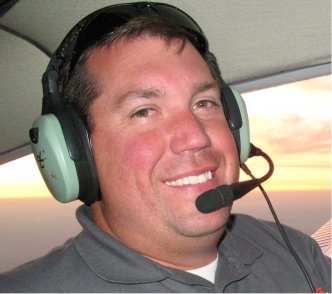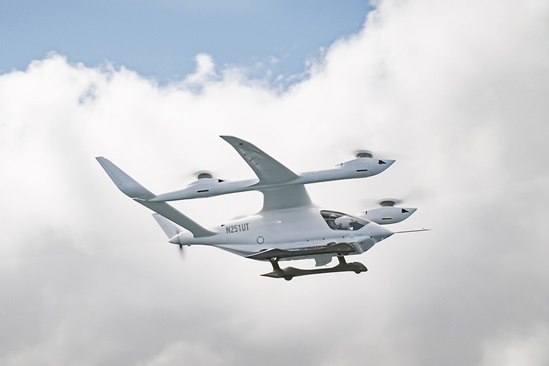Discussing finances with flight students
A key to the success of any business is finding customers who can afford to buy what you are selling. No business can be successful if it markets to customers that can’t afford its products.
In aviation, we do this more than we probably want to admit. I did it when I provided flight training at an FBO I owned. And it wasn’t successful. We are passionate about what we do and we want to share this with everyone. Unfortunately, not everyone can afford it. From a business perspective, to be successful, we need to prequalify our customers.
Starting a discussion about the cost of learning to fly doesn’t mean that we have to be the judge of whether or not people get to learn to fly. It means we need to give correct information to our customers to help them make those hard decisions. Having this discussion tactfully with your new or prospective customer can be sensitive and a little bit challenging.
In flight training, we are selling access to airplanes and the training to become qualified and proficient to fly them. This is very special; it is valuable; and it is expensive to provide. You can do a few things to help ensure your customers can afford your training and ensure your efforts will be put into customers most likely to be strong revenue generators.
Determine the customer’s purpose of learning
If your client is learning to fly for fun, it is something that may be able to be stretched out over time. If he or she is trying to complete training quickly for career reasons, it may require different funding structures to be in place. If the customer doesn’t have an unlimited bank account, he or she may want to save up for training, seek loans, or secure other funding resources to pay. Determining why the customer wants to learn to fly, how many ratings and/or certificates need to be completed, and in what time, will help a training provider build a realistic schedule that can be incorporated into the customer’s budget restrictions.
Provide realistic estimates of cost
A good practice when working with new customers is to have a private and realistic conversation about the costs of flying. In this conversation, discuss what costs they can expect on a regular basis as they train as well as an overall cost for the rating or certificate. You can help your customers understand if what they are willing to budget for their training is appropriate to support their training plans.
Provide facts and let customers make their own decisions. Discuss with them realistic expectations of what weekly lesson lengths will be and how much this will cost.
Before you can do that, you must have a realistic estimation of the costs that a student will incur when receiving flight training from your school.
For example, if the customer plans to fly once a week, and the aircraft you will be using rents for $200 per hour, you know that the four lessons (with an average of 1.5 hours of flight time on each—a total of six hours) per month are going to cost $1,200 per month. Add in the cost of an instructor, let’s say at $75 per hour for the lessons and a little extra ground time (how about an extra half-hour on each lesson and two extra hours of ground instruction throughout the month—a total of 10 hours). This would total another $750. If we add these together, the total for the month would be $1,950.
Many times students don’t do the math to determine the real costs and never look at the big number. You might be afraid you will scare your students away by showing them this math. If this math scares your student away, he was probably going to run into financial difficulty.
Don’t keep pushing a customer until they run out of money
A training provider keeps a customer flying a few times a week when the customer is on a limited budget, and when she runs out of money, she stops training. Frequently, these customers never complete the training they started. This is bad for two reasons: The customer never completes the goal, and the business has dedicated resources to a customer who never fulfills the potential revenue a provider should get for the time spent.
I know this sounds crass, but if a training provider spends 20 hours with a student who doesn’t complete his or her training for a private pilot certificate, that is 20 hours that could have been spent with a customer who would have bought a full 50 hours of training. It has blocked the business from allocating those resources to a more profitable customer.If the business had prequalified the customer with discussion of realistic costs, the customer who got halfway through the training might have waited to begin, saved up some funds, and completed a certificate later.
Sometimes we are short-sighted in our revenue decisions and are just happy that a customer has scheduled some instruction from our business. In some flight training operations, students are required to prove they have the funds required to fully complete the training prior to even being allowed to begin. This works for some; it may not for others, but at least considering the funds available will stop a business from regularly encountering students who run out of money.
Separate the instructor from the financial discussions
If possible, separate the person whose responsibility is to hold financial discussions with the customer from the person who provides the training. Many flight instructors who work for flight schools will be nervous discussing finances with their customers. Financial discussions may hinder the student-instructor relationship, in some cases causing students to avoid talking with their instructor so they can avoid discussing finances.
A dedicated person who talks with the student in a private room, perhaps after an introductory flight lesson, can lay out expected costs and budget considerations, allowing the customer to go home with good information to make decisions about a flight training budget. This same person can help students budget, and build an expected schedule of lessons based on their financial ability.
Set the training schedule in consideration of budget constrictions
When considering a budget for flying, it is possible that your customers won’t be able to commit to a monthly expense of $1,750, but they are willing to commit a monthly expense of $1,000. In your discussion of financial needs for flight training, you could help the customer plan ahead. Tell the customer to take three or four months to save up the monthly commitment of $1,000, then start their training with some money already in the bank. If they saved for four months, putting away a monthly payment, then started training, also having the same monthly payment, they could support their training more effectively.
With a little spreadsheet work, a savvy business could even pull together a training cost/budget calculator they could share with their customers to help carefully consider their options. I have created just such a budget calculator spreadsheet you can use to have this discussion. You can find it online http://bit.ly/2kWKAel.
Discussing finances with students may be outside of the traditional role of the flight training provider, but it is a part of the business that, if done correctly, can help make sure your company is more successful.



